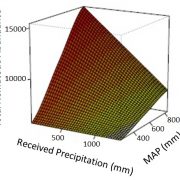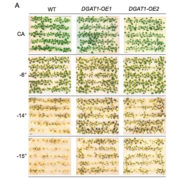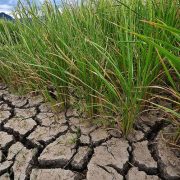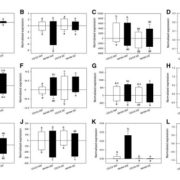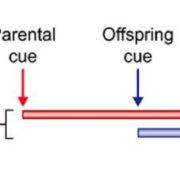Arabinogalactan-proteins of Zostera marina L. contain unique glycan structures and provide insight into adaption processes to saline environments (Sci. Reports)
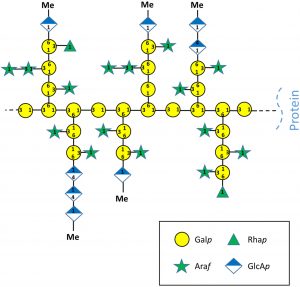 Seagrasses are fascinating examples of adaptation. Like dolphins and other sea mammals, they are marine-dwelling descendants of species that had fully adapted to life on land. To survive submerged in saltwater has necessitated morphological, anatomical and physiological adaptations. Recent genome analysis suggests that seagrasses also have unique cell wall components. Pfeifer et al. have used several proteomic and analytical methods to investigate the arabinogalactan proteins (AGPs; highly glycosylated cell-surface proteins), of the seagrass Zostera marina. AGPs in terrestrial angiosperms are known to play roles in cellular signaling as well as in salt responses. The authors found that the seagrass AGPs include many non-canonical sequences and have unique polysaccharide moieties. Specifically, these polysaccharides are highly branched and have a high Araf (α-L-arabinose) content; arabinose has previously been shown to contribute to salt stress tolerance in Arabidopsis and to contribute plasticity to walls of resurrection plants. They also are enriched for uronic acids which are known to facilitate calcium binding. These findings suggest that the adaptations of seagrasses to saline waters involves extensive cell wall modifications. (Summary by Mary Williams @PlantTeaching) Sci. Reports 10.1038/s41598-020-65135-5
Seagrasses are fascinating examples of adaptation. Like dolphins and other sea mammals, they are marine-dwelling descendants of species that had fully adapted to life on land. To survive submerged in saltwater has necessitated morphological, anatomical and physiological adaptations. Recent genome analysis suggests that seagrasses also have unique cell wall components. Pfeifer et al. have used several proteomic and analytical methods to investigate the arabinogalactan proteins (AGPs; highly glycosylated cell-surface proteins), of the seagrass Zostera marina. AGPs in terrestrial angiosperms are known to play roles in cellular signaling as well as in salt responses. The authors found that the seagrass AGPs include many non-canonical sequences and have unique polysaccharide moieties. Specifically, these polysaccharides are highly branched and have a high Araf (α-L-arabinose) content; arabinose has previously been shown to contribute to salt stress tolerance in Arabidopsis and to contribute plasticity to walls of resurrection plants. They also are enriched for uronic acids which are known to facilitate calcium binding. These findings suggest that the adaptations of seagrasses to saline waters involves extensive cell wall modifications. (Summary by Mary Williams @PlantTeaching) Sci. Reports 10.1038/s41598-020-65135-5


